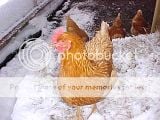Quote:
I don't think my chickens would sit still long enough for me to do this anyways!
ROTFLMAO



Pat
I don't think my chickens would sit still long enough for me to do this anyways!
ROTFLMAO



Pat







